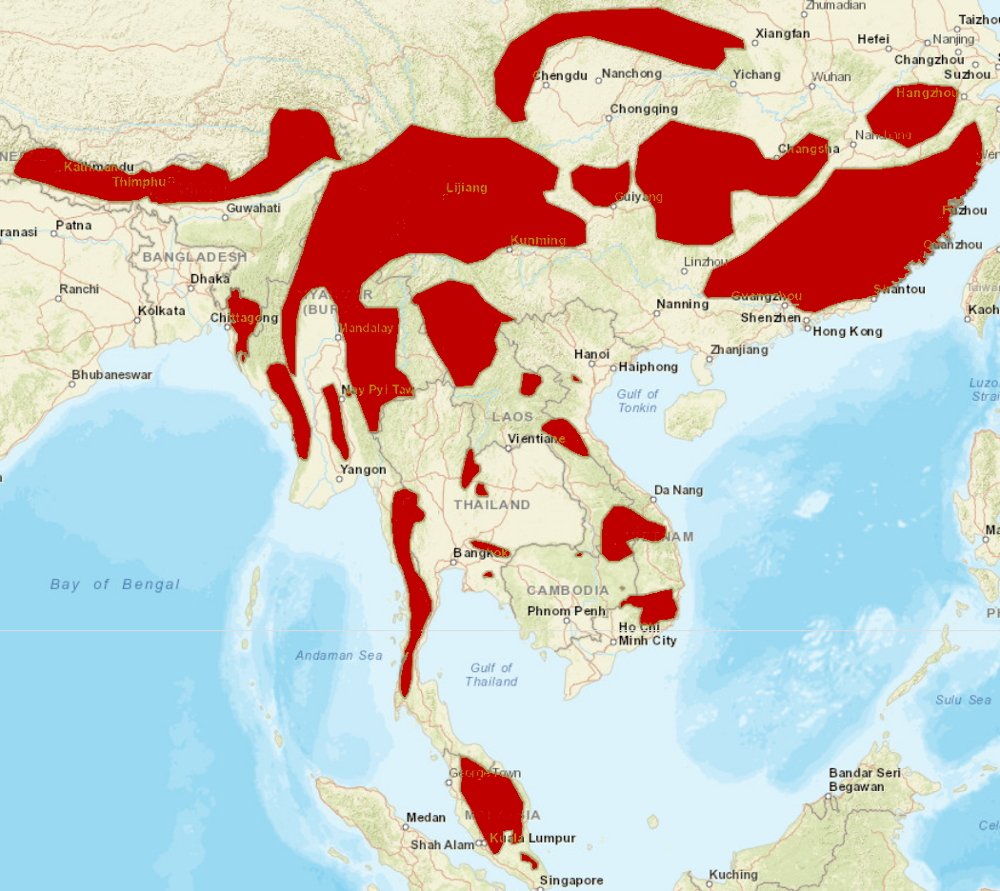The Clouded Leopard (Neofelis nebulosa), also called the mainland clouded leopard, is a wild cat inhabiting dense forests from the foothills of the Himalayas through mainland Southeast Asia into South China. In the early 19th century, a clouded leopard was brought to London from China and described in 1821. It has large dusky-grey blotches and irregular spots and stripes reminiscent of clouds. Its head-and-body length ranges from 68.6 to 108 cm (27.0 to 42.5 in) with a 61 to 91 cm (24 to 36 in) long tail. It uses its tail for balancing when moving in trees and is able to climb down vertical tree trunks head first. It rests in trees during the day and hunts by night on the forest floor.
The clouded leopard is the first cat that genetically diverged 9.32 to 4.47 million years ago from the common ancestor of the pantherine cats. Today, the clouded leopard is locally extinct in Singapore, Taiwan, and possibly Hainan Island and Vietnam. Its total population is suspected to be fewer than 10,000 mature individuals, with a decreasing population trend, and no single population numbering more than 1,000 adults. It has therefore been listed as Vulnerable on the IUCN Red List since 2008. The population is threatened by large–scale deforestation and commercial poaching for the wildlife trade. Its body parts are offered for decoration and clothing, though it is legally protected in most range countries.
The clouded leopard has been kept in zoological gardens since the early 20th century. Captive breeding programs were initiated in the 1980s. In captivity, the clouded leopard has an average lifespan of 11 years.
Mainland Clouded Leopard (Neofelis nebulosa) - Seen once wild in Khao Yai National Park Thailand (no images) and captive in poacher’s hut in Da Lat Viet Nam in 1994. Stuffed specimens below are in a tourist section of Cat Tien National Park Viet Nam same year.














